According provided by Nikon AF-S lens Nikkor 85mm 1: 1.8G SWM IF SWM many thanks Sergey Svirida и Dmitry Glotte.
In total, Nikon has 6 such lenses:
- Nikon 85mm 1: 1.8 AF NikkorDecember 1987
- Nikon 85mm 1: 1.8D AF NikkorMarch 1994, Japan or Thailand
- Nikon 85mm 1: 1.8G AF-S IF SWM NikkorJanuary 2012
- Nikon 85mm 1: 1.4D AF NikkorNovember 1995
- Nikon 85mm 1: 1.4GN AF-S Nikkor SWM IF Nano Crystal CoatAugust 2010
- Nikon 85mm 1: 1.8 S Nikkor Z, July 2019, for mirrorless cameras
It is believed that the lenses of this series are well suited for some types of portrait shooting - they have rather weak distortion, and a similar combination of focal length and aperture makes it easy to control the depth of field. In 2012, the Nikon 85mm F / 1.8G replaced the very popular Nikon 85mm F / 1.8D.
There is another 85-aperture light from a third-party manufacturer - Sigma EX 85mm 1: 1.4 DG HSM.
Main technical characteristics of Nikon AF-S Nikkor 85mm 1: 1.8G IF SWM:
| Review Instance Name | Nikon AF-S Nikkor 85mm 1: 1.8G IF SWM 265565 (inscription near the front lens - Nikon AF-S Nikkor 85mm 1.8G) |
| Basic properties |
|
| Front Filter Diameter | 67 mm, plastic thread for filters |
| Focal length | 85 mm, EGF for Nikon DX cameras is 127.5 mm |
| Zoom ratio | 1 X (this is a fixed lens without the ability to change the focal length) |
| Designed by | for digital cameras Nikon FX |
| Number of aperture blades | 7 rounded petals |
| Tags | focusing distance in meters and feet, depth of field scale for F / 16, bayonet mount mark, hood mount mark |
| Diaphragm | from f / 1.8 to f / 16. The lens does not have an aperture ring (G - lens type) |
| MDF (minimum focusing distance) | 0.8 m, maximum magnification ratio 1: 8.1 |
| The weight | 350 g |
| Optical design | 9 elements in 9 groups. The lens does not use special optical elements. 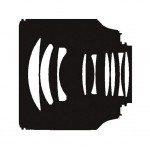 |
| Lens hood | HB-62 |
| Period | from January 2012 to our time |
| Manufacturer country | Made in China |
| Instructions | See |
| Price |
Nikon AF-S Nikkor 85mm 1.8G IF SWM was introduced in early 2012 and became a replacement for the popular Nikon 85mm 1: 1.8D AF Nikkor. I was immediately surprised by the size of the Nikon 85mm F / 1.8G, compared to 85mm f / 1.8D the new lens is noticeably 'thicker' and only slightly lighter.
The figure below shows all three generations of Nikon Nikkor 85 / 1.8 class autofocus lenses:
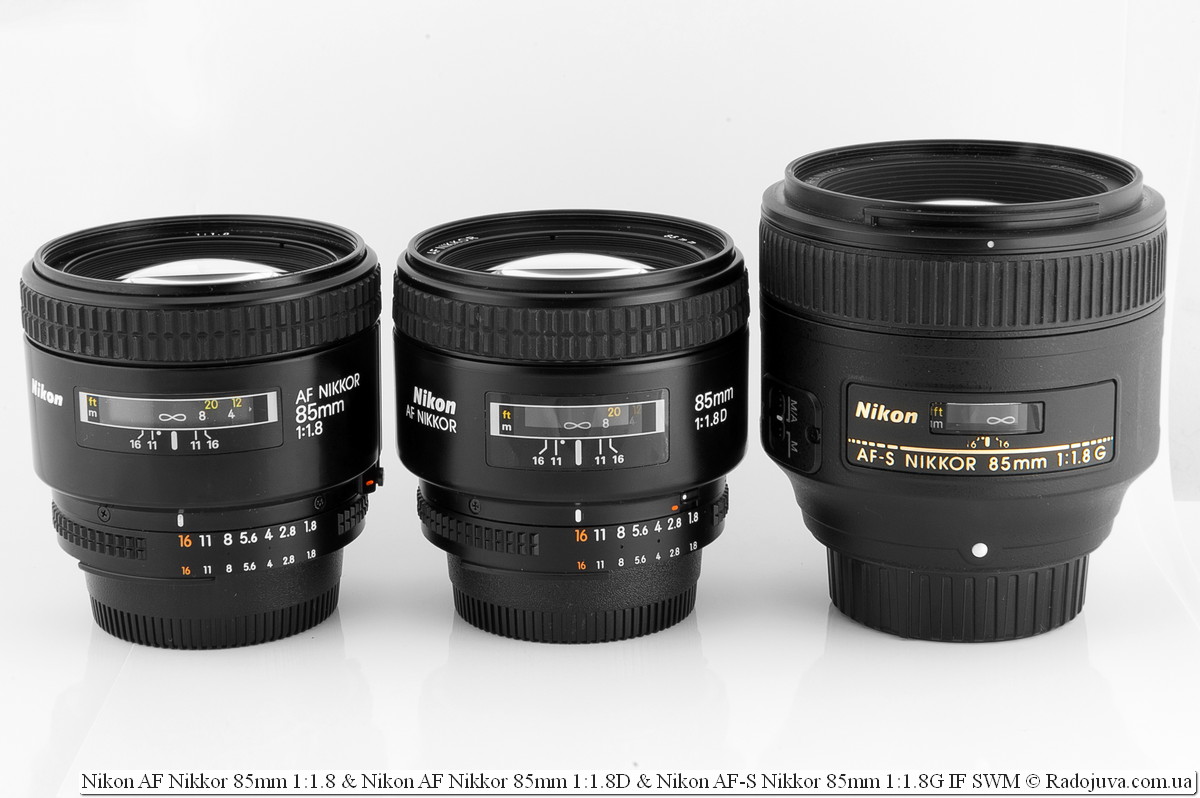
Nikon AF Nikkor 85mm 1: 1.8 и Nikon AF Nikkor 85mm 1: 1.8D and Nikon AF-S Nikkor 85mm 1: 1.8G IF SWM
Bad news - the new Nikon 85mm f / 1.8G now focuses slower than its big brother. I just can't understand why it was necessary to upgrade 85mm f / 1.8D to the AF-S SWM version and, at the same time, get a lens that focuses more slowly at the output? The same situation with 85mm F / 1.4GNwhich focuses much slower non-motorized old version 85mm f / 1.4D... What is Nikon doing? It's too bad that new motorized lenses focus more slowly than their predecessors. I also want to note that Nikon 85mm F / 1.8G is very much behind in focusing speed and its analog from Canon - Canon EF 85mm F / 1.8 USM. It turns out that the old Canon EF 85mm F / 1.8 USM wins in focus speed on all 85-current Nikon.
Nikon 85mm F / 1.8G is made only in China. The lens has a plastic case, to the touch is no different from the new Nikon fix lenses: Nikon 50mm F / 1.8G, Nikon DX 35mm F / 1.8G. Unlike 85mm f / 1.8DThe G-version lost the metal thread for the light filter, and the 9-blade aperture, but retained the metal mount and acquired the mode M / AM. Old 85mm f / 1.8D still made better than the new G-version.
This is what the Nikon AF-S Nikkor 85mm 1: 1.8G IF SWM looks like from different angles, on the Nikon AF camera N8008S, with a Nikon HB-62 blend and compared to Nikon ED AF Nikkor 80-200mm 1: 2.8D (MKII):
The Nikon 85mm F / 1.8G comes with an HB-62 bayonet hood that can be mounted backwards and taken with you anywhere. The hood is not screwed into the light filter, but is put on using special slots on the lens. If you put the hood in transport mode, you completely lose access to the focusing ring. Front filter diameter - 67mm. The lens is nice, looks good on the camera.
The good news - Nikon 85mm F / 1.8G has high optical performance. The lens is very sharp, sharper 85mm f / 1.8D, and with very good bokeh.

Differences autofocus 85-current Nikon. Nevertheless, version 85 1,8G received the most points from me.
Focusing
Nikon 85mm f / 1.8G focuses very quietly thanks to 'SWM'to the motor (Silent Wbird Motor - quiet wave / ultrasonic motor) and refers to the lens'AF S'type (with built-in motor focusing), and therefore it will automatically focus on any Nikon digital SLR camera. On cameras Nikon D80, D700, D750 и Fujifilm FinePix S5 Pro I had no complaints about the accuracy and tenacity of auto focus. Only the focusing speed left an unpleasant residue.
During focusing, the front and rear lenses remain stationary, as the lens uses internal focusthat is indicated on the case by the letters'IF'-'Iinternal Focus' - 'Inner Focus'.
On the lens housing you can find focus switch 'M / A - M'. In the 'M / A' position, auto focus works with constant manual focus priority. The 'M / A' mode is very convenient and useful - for manual focusing or focus correction, you do not need to additionally switch the lens to the 'M' mode.
In manual focus mode, the ring rotates 120 degrees, when it reaches the extreme positions it does not rest, but continues to slide, without affecting the focus. Focusing by hand is nice and easy. During auto focus, the focus ring remains stationary.
The minimum focusing distance is 80 cm, while you can get a maximum magnification of 1: 8. The lens has a window with a scale of distances in meters and feet, as well as a depth of field scale for the F / 16 value and a mark for working in the infrared spectrum.
Information on choosing a portrait lens can be found in the 'Portrait Fixed Lenses for FX Cameras', the optical schemes of all 85-ok can be found in the section'Nikon Fix Lens Schemes'. What do the designations in the lens name (AF-S, SWM, IF, G) mean in the article 'Types of Nikon Lenses'. How to achieve maximum blurring of the background with Nikon AF-S Nikkor 85mm 1: 1.8G SWM IF is described in section 'Blurred background'. On Nikon DX cameras EGF lens will fit 127,5mm due to crop factor.
Sample photos on Nikon 85mm F / 1.8G
The lens is sharp. Like many fast lenses, the Nikon 85mm F / 1.8G suffers from chromatic aberration, and the fringing is especially pronounced (the color of the blur zone is purple and green). Distortion is minimal, vignetting on FX cameras disappears at F / 2.8. I was very pleased that the lens practically does not respond to side and backlight, it is very difficult to catch glare. The bokeh of the lens deserves special attention. Many sites write that the Nikon 85mm F / 1.8G produces super-bokeh, yes, the bokeh is really good, but still 85mm F / 1.4GN does not reach.
You can download RAW source files at this link (60 files in .'NEF 'format, 330 MB). All photos were shot using protective filter Hoya HMC 67mm UV (0).
Supplement: You can see more examples of photos on cropped cameras of the Nikon DX series in the reviews Nikon D40x, Nikon D50 и Fujifilm FinePix S5 Pro.
Differences between Nikon AF Nikkor 85mm 1: 1.8D (1.8D) and Nikon AF-S Nikkor 85mm 1: 1.8G IF SWM (1.8G)
- Version 1.8D older than 1.8G. Version 1.8D was introduced in March 1994, and 1.8G in January 2012. Thus, the difference in technology is 18 years.
- Version 1.8D It does not have a built-in focusing motor, and therefore it will be difficult to work with on younger Nikon cameras. In turn, 1.8G is equipped with a SWM motor and will work well on any Nikon digital SLR cameras.
- Because the 1.8D uses a camera motor (a so-called “screwdriver”), the lens makes a lot of noise during focusing. The 1.8G version works almost silently.
- Version 1.8D focuses faster.
- Version 1.8D does not have a focus mode switch. 1.8G has a wonderful switch M / AM.
- During auto focus, the focus ring 1.8D rotates and cannot be touched. During auto focus on 1.8G, the focus ring does not rotate.
- Version 1.8D Uses an internal focusing type Rear Focusing System (RFS), a rear focusing system that moves the rear elements to focus. In turn, the 1.8G uses fully internal focusing, during which neither the front nor the rear elements move.
- Version 1.8G has a longer stroke of the focus ring (120 degrees, versus 90 degrees for 1.8D).
- Version 1.8D has a hard stop for instantly focusing on infinity (hard infinity-focus stop). In the case of 1.8G, accurate aiming at infinity is carried out using automatic focusing (all due to temperature limitations of the material).
- Version 1.8D It has an aperture control ring, which can be very useful for working on some film cameras, as well as while working on cameras of other systems. For example, some photographers buy 1.8D to shoot video using Canon or Sony cameras, where the iris can be controlled using the iris ring. Version 1.8G lacks such a ring, and aperture control is possible only with the help of camera controls.
- Version 1.8D a little harder.
- The 1.8G has a rubber seal near the lens mount to protect the lens and camera from dust and moisture.
- Version 1.8D smaller in size, in particular, it uses filters of a smaller diameter.
- Version 1.8D uses metal thread for light filters, and 1.8G uses plastic thread.
- Version 1.8D It has 9 aperture blades, versus 7 1.8L blades.
- Version 1.8D uses a metal hood that is screwed into the thread of the front filter and cannot be installed in the opposite direction for transportation. Version 1.8G uses a plastic bayonet hood with the ability to install the reverse side.
- У 1.8D the minimum focusing distance is 85 cm, versus 80 cm for the 1.8G (less is better).
- Part of the lenses 1.8D made in Japan, and part in Thailand. All 1.8G lenses are made in China.
- У 1.8D There is a label for working in the infrared spectrum.
- У 1.8D there are two marks of the depth of field scale - for F / 11 and F / 16. The 1.8G has a notch for F / 16 only.
- Touch version 1.8D assembled much more reliable than 1.8G.
- Optically 1.8G is better than 1.8D, First of all, the difference is noticeable during operation on the f / 1.8 aperture.
As you can see, at least 1.8G is 18 years newer than the old man 1.8D, but the latter, in some nuances, is better than the newer model. Overview Nikon AF Nikkor 85mm 1: 1.8D You can view here.
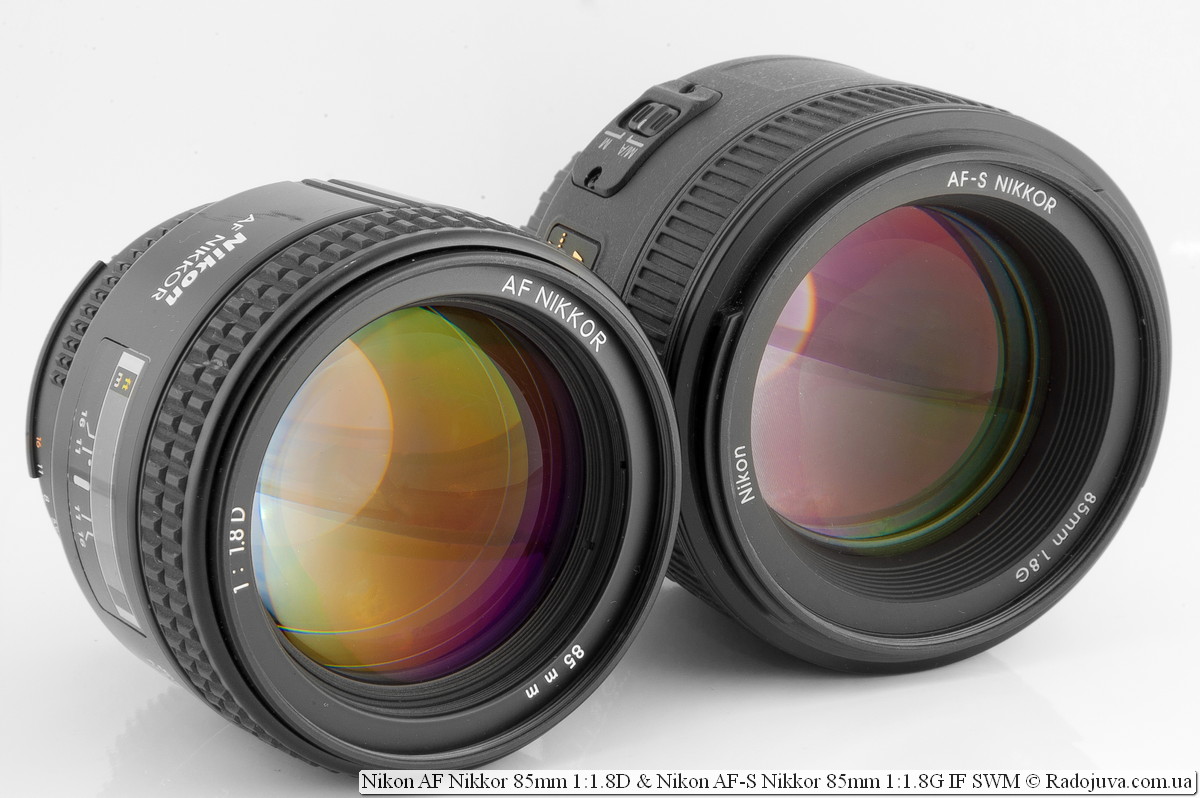
Nikon AF Nikkor 85mm 1: 1.8D and Nikon AF-S Nikkor 85mm 1: 1.8G IF SWM
My use experience
I shot on the Nikon 85mm F / 1.8G at several weddings, the difference between the F / 1.8G version and F / 1.8d quite noticeable, especially in sharpness at f / 1.8. Despite some flaws, the Nikon 85mm F / 1.8G is by far the best price / quality ratio among the rest of the Nikon 85s. because i recommend it as an inexpensive and good fast-fix for shooting portraits both in crop and in full frame. Nikon 85mm F / 1.8G does almost everything the same as Nikon 85mm F / 1.4G, while its price is many times lower :).
Lens prices
Real prices for Nikon AF-S Nikkor 85mm 1: 1.8G IF SWM lens can be viewed here, or in the price block below:
Comments on this post do not require registration. Anyone can leave a comment. Many different photographic equipment can be found on AliExpress.
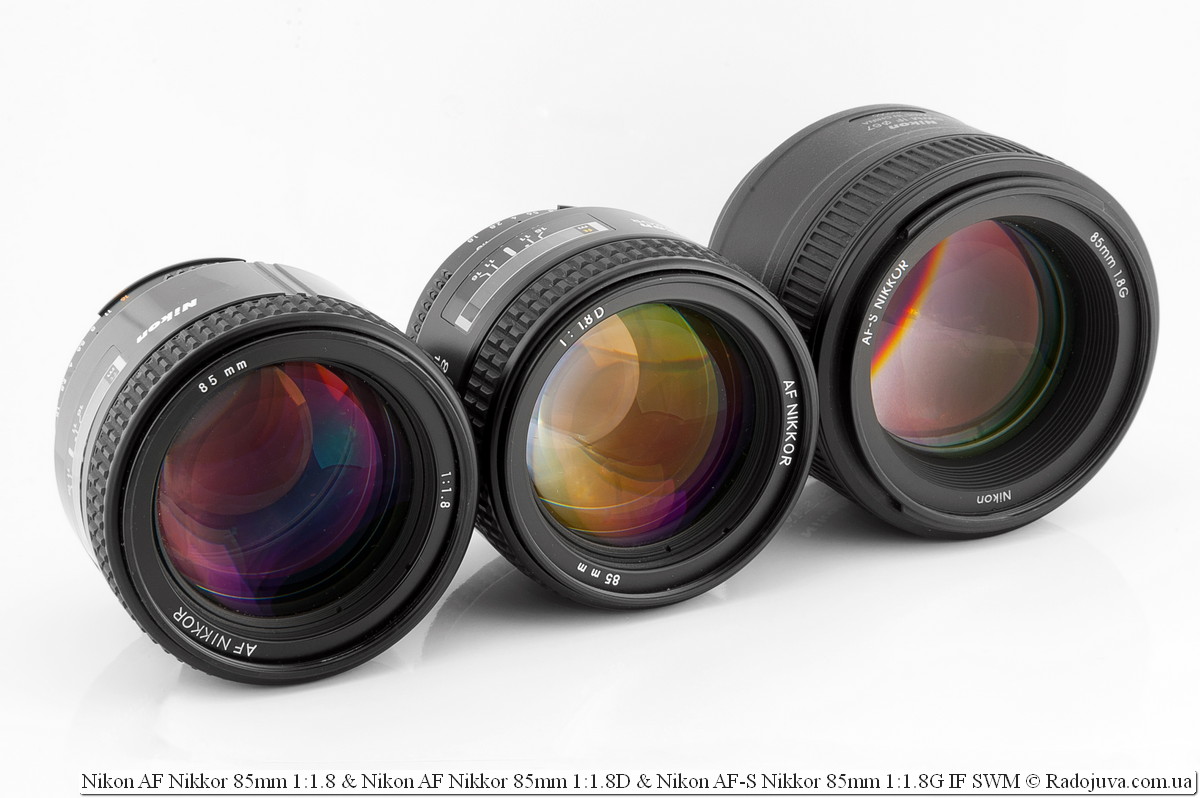
Three generations of Nikkor 85 / 1.8 class lenses: Nikon AF Nikkor 85mm 1: 1.8 и Nikon AF Nikkor 85mm 1: 1.8D and Nikon AF-S Nikkor 85mm 1: 1.8G IF SWM
All autofocus 85s
Choosing a good 85mm portrait lens is very important for a large number of photographers. I pay a lot of attention to this issue, therefore I have prepared this list of all such autofocus lenses for full frame cameras with F <= 2 and a focal length of about 85 mm.
Nikon (F, Z mounts)
- Nikon 85mm 1: 1.8 AF Nikkor [December 1987]
- Nikon 85mm 1: 1.8D AF Nikkor [March 1994, Thailand/Japan]
- Nikon 85mm 1: 1.4D AF Nikkor [November 1995]
- Nikon 85mm 1: 1.4GN AF-S Nikkor SWM IF Nano Crystal Coat [August 2010]
- Nikon 85mm 1: 1.8G AF-S IF SWM Nikkor [January 2012]
- Nikon Nikkor Z 85mm 1: 1.8 S [July 2019]
- Nikon Nikkor Z 85mm 1: 1.2 S [January 2023]
Canon (EF, RF mounts)
- Canon LENS EF 85mm 1:1.2 L USM [September 1989
- Canon LENS EF 85mm 1: 1.8 USM [July 1992]
- Canon LENS EF 85mm 1:1.2 L II USM [March 2006]
- Canon LENS EF 85mm 1:1.4 L IS USM [November 2017]
- Canon lens RF 85mm F1.2L USM [May 2019]
- Canon lens RF 85mm F1.2L USM DS (DEFOCUS SMOOTHING) [October 2019]
Yongnuo/YnLens (different mounts)
- Yongnuo YN85mm F1.8 (YN85mm F1.8) [9/6, Canon EF, February 2017]
- Yongnuo YN85mm F1.8 (YN85mm F1.8N) [9/6, Nikon F, May 2019]
- Ynlens YN85mm F1.8S DF DSM (YN85mm F1.8S) [9/8, Sony E, August 2020]
- Ynlens YN85mm F1.8R DF DSM (YN85mm F1.8R) [9/8, Canon RF, May 2021]
- Ynlens YN85mm 1:1.8Z DF DSM (YN85mm F1.8Z) [9/8, Nikon Z, March 2022]
- Yongnuo 85F1.8S DF DSM [9/8, Sony E, August 2022]
Sony / Sony Zeiss ZA / Minolta (E / FE, A mount)
- Sony FE 1.4/85 GM (SEL85F18GM) [February 2016]
- Sony FE 1.8/85 (SEL85F18) [February 2017]
- Sony SAL85F14Z / Carl Zeiss Planar 1,4 / 85 ZA T* [June 2006]
- Minolta AF 85mm 1:1.4 (22) (AF lens 85) / Minolta Maxxum / Dynax / G / G+D / G+RS / G+D+LE and other versions of the same lens, A mount [1987]
Sigma (different mounts)
- Sigma EX 85mm 1: 1.4 DG HSM (two sub-versions with different body finishes, for Canon EF, Nikon F, Pentax K, Sony A, February 2010)
- Sigma 85mm 1: 1.4 DG | A [Art] (for Canon EF, Nikon F, Sigma SA, Sony E, Leica L, September 2016)
- Sigma 85mm 1: 1.4 DG DN | A [Art] (for Sony E, Leica L, August 2020)
Viltrox (different mounts)
- Viltrox PFU RBMH 85mm F1.8 STM (Sony E/FE + Fujifilm X, 2018)
- Viltrox AF 85/1.8 STM ED IF (Nikon Z, Canon RF, December 2020)
- Viltrox AF 85/1.8 II STM ED IF (Sony E/FE + Fujifilm X, July 2020, light version XNUMX)
Pentax (K mount)
- SMC Pentax-FA* 1:1.4 85mm IF AUTO FOCUS PENTAX 85 [1992]
- HD PENTAX-D FA * 85mm 1: 1.4 ED SDM AW [May 2020]
Samyang / Rokinon (different mounts)
- Samyang AF 85 / 1.4 EF (for Canon EF, scheme 9/7, June 2018)
- Samyang AF 85/1.4F (for Nikon F, scheme 9/7, April 2019)
- Samyang AF 85 / 1.4 FE (for Sony E, scheme 11/8, March 2019)
- Samyang AF 85 / 1.4 RF (for Canon RF, scheme 11/8, May 2020)
- Samyang AF 85 / 1.4 FE II (for Sony E, scheme 11/8, July 2022)
Meike (Canon EF, Nikon F, Sony E, Nikon Z, FujiFilm X)
- MEIKE 85mm AF 1: 1.8 [review] (Canon EF / Canon EF-S, April 2018)
- MEIKE 85mm AF 1: 1.8 [review] (Nikon F, Aug 2020)
- MEIKE 85mm 1:1.8 Auto Focus Lens FF STM [review] (for Sony FE/E + Nikon Z, Canon RF, FujiFilm X, June 2022 + March 2023)
- MEIKE 85mm 1:1.4 Auto Focus Lens FF STM (for Sony FE/E + Nikon Z, September 2023)
Zeiss (various mounts)
- Zeiss Sonnar 1.8 / 85 T * (Batis 1.8 / 85) [April 2015, built-in stabilizer, Sony E/FE mount, 11/8]
- Carl Zeiss Planar 1,4/85 ZA T* (Sony SAL85F14Z) [June 2006, Sony A/Minolta A mount, 8/7]
- Carl Zeiss Planar 1,4 / 85 T * [November 2002, Contax N mount, 10/9]
Tamron (different mounts)
- Tamron SP 85mm F/1.8 Di VC USD Model F016 (for Canon EF, Nikon F, Sony A [without VC function], March 2016)
Tokina (Sony E / FE mount)
- Tokina atx-m 85mm F1.8 FE (for Sony E, most likely a complete analog Viltrox PFU RBMH 85mm F1.8 STM, January 2020)
AstrHori (Sony E/FE mount)
-
AstrHori AF 85mm 1:1.8 [December 2022]
Panasonic (L mount)
- Panasonic LUMIX S 1: 1.8 / 85mm [November 2020]
Separately, you can still highlight non-classic 85s:
- macro lens Canon Lens RF 85mm F2 MACRO IS STM [2020, RF]
- longer LEICA APO-SUMMICRON-SL 1: 2/90 ASPH. (2018, Leica l)
- less aperture Sony 85 / 2.8 SAM (SAL85f28) [2010, A]
- shorter SMC PENTAX FA 1:1.8 77mm Limited (1997, K)
- shorter HD Pentax-FA 1: 1.8 77mm Limited (2021, K)
- shorter Samyang AF 75 / 1.8 FE (2020, E) + Samyang AF 75/1.8X (2023, X)
- cropped Samsung Lens 1:1.4 85mm ED SSA i-Function [2011, NX]
- cropped and longer FUJIFILM FUJINON LENS SUPER EBC XF 90mm 1: 2 R LM WR [2015, X]
- cropped and shorter Viltrox AF 75/1.2 XF STM ED IF [2022, X, E, Z]
- cropped, less aperture, macro lens Nikon DX AF-S Micro Nikkor 85mm 1: 3.5G ED VR SWM IF Micro 1: 1 [2009, F]
- many 90/2.8 class macro lenses
In addition to this review, I recommend a look at the section on portrait lenses for Nikon.
Results
Nikon AF-S Nikkor 85mm 1: 1.8G SWM IF - great lensGood for portraiture. I recommend.
Update: there was a review of an inexpensive alternative to this lens in the face YONGNUO 100 / 2.
Material prepared Arkady Shapoval. Training/Consultations | Youtube | Facebook | Instagram | Twitter | Telegram

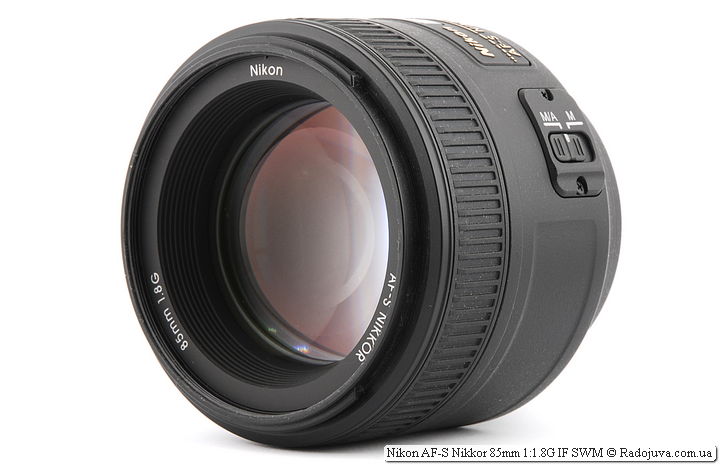
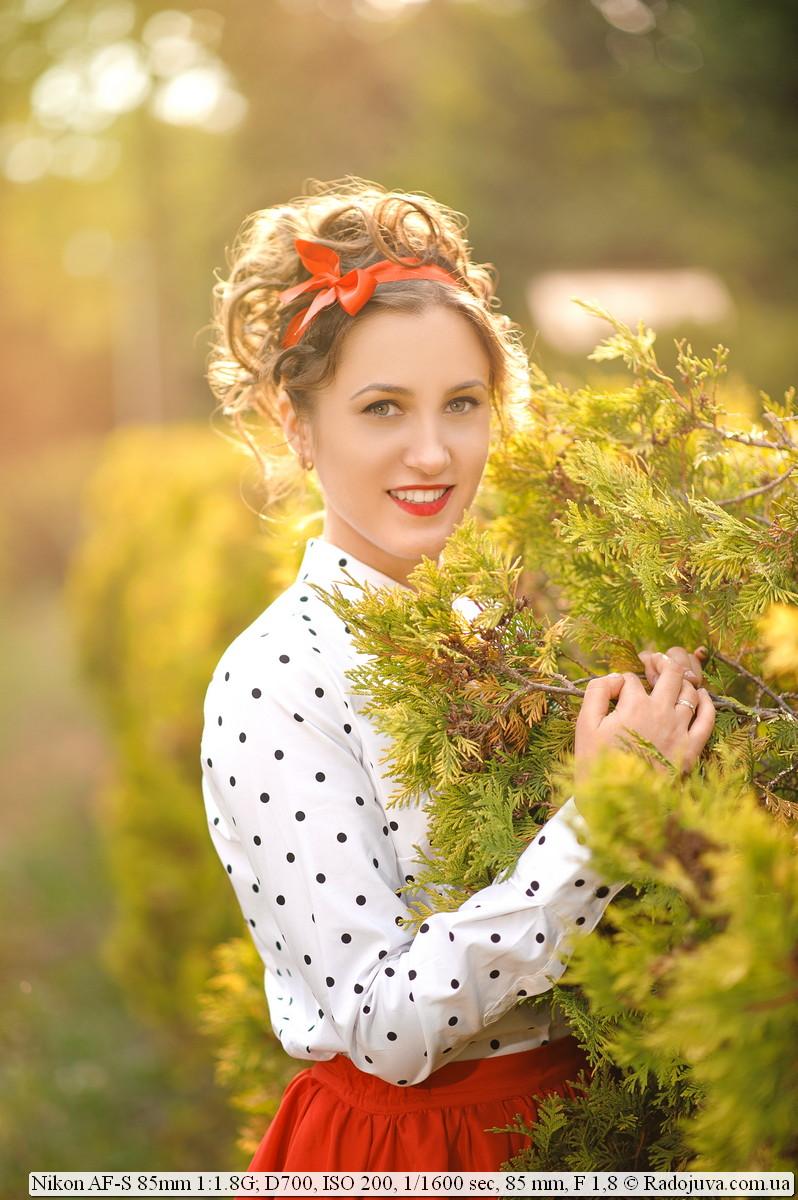
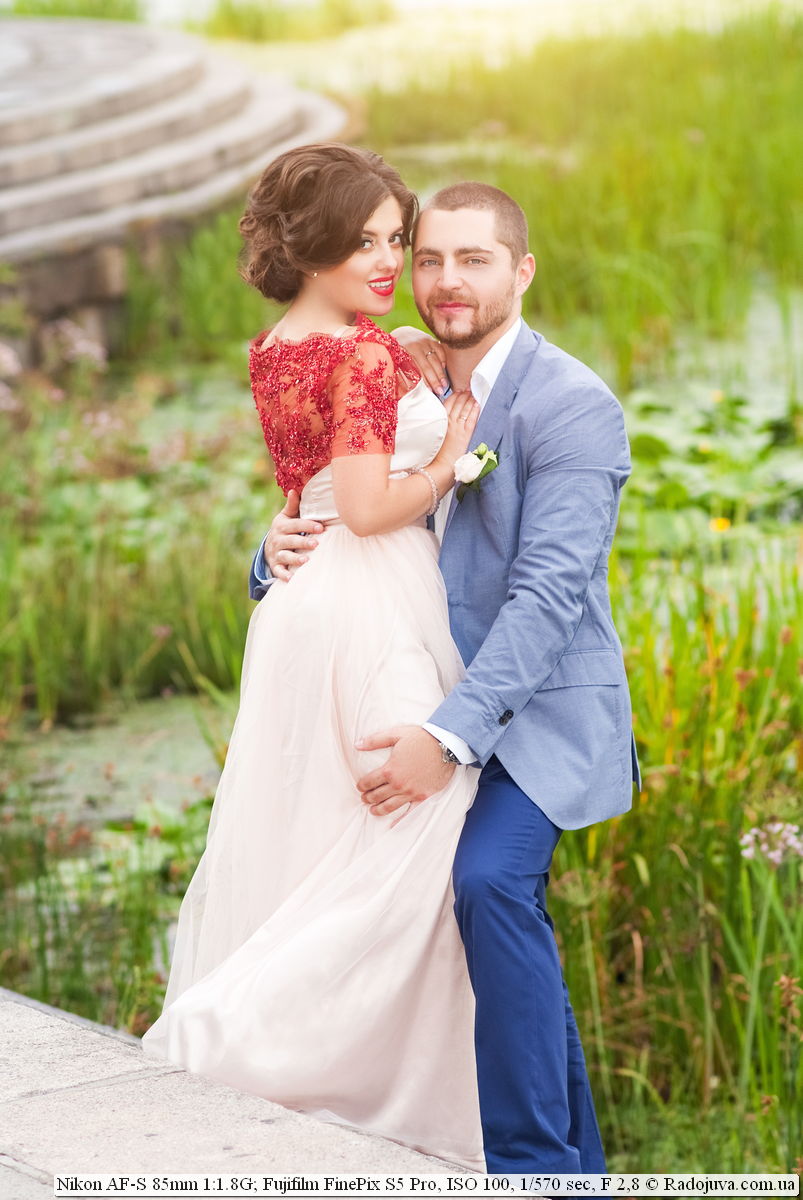










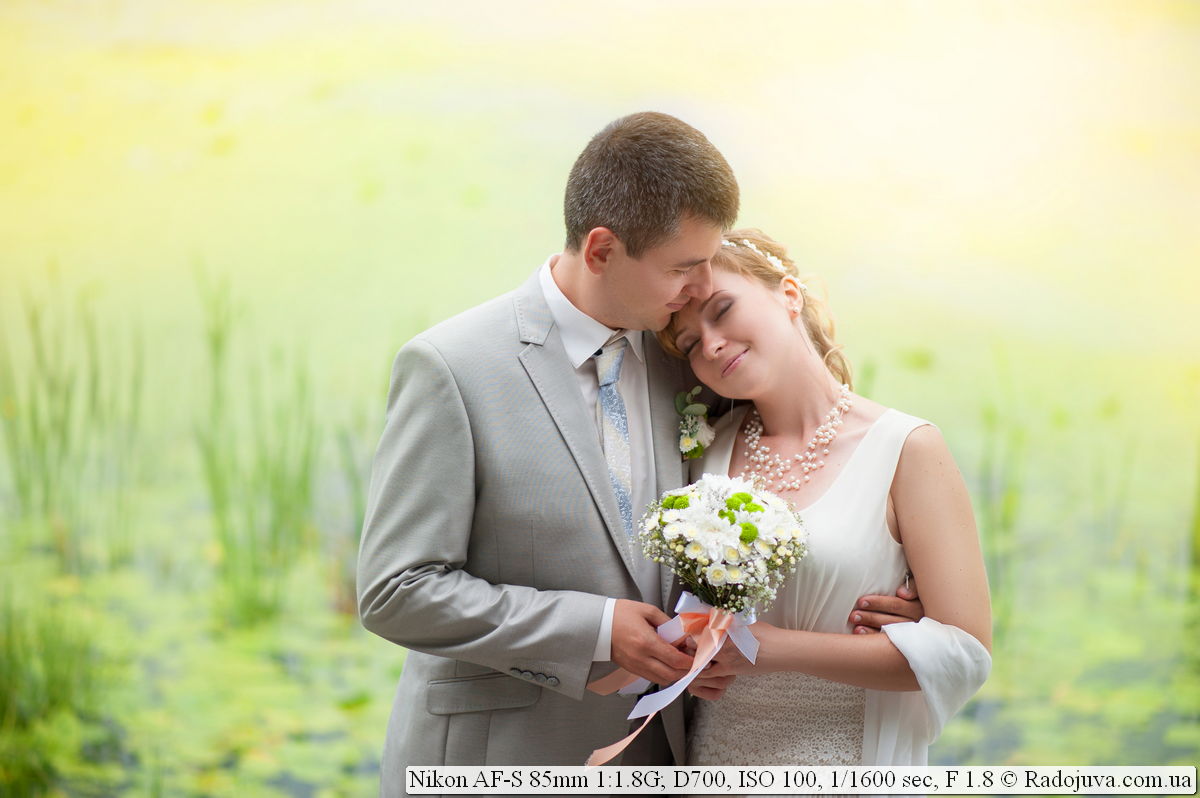
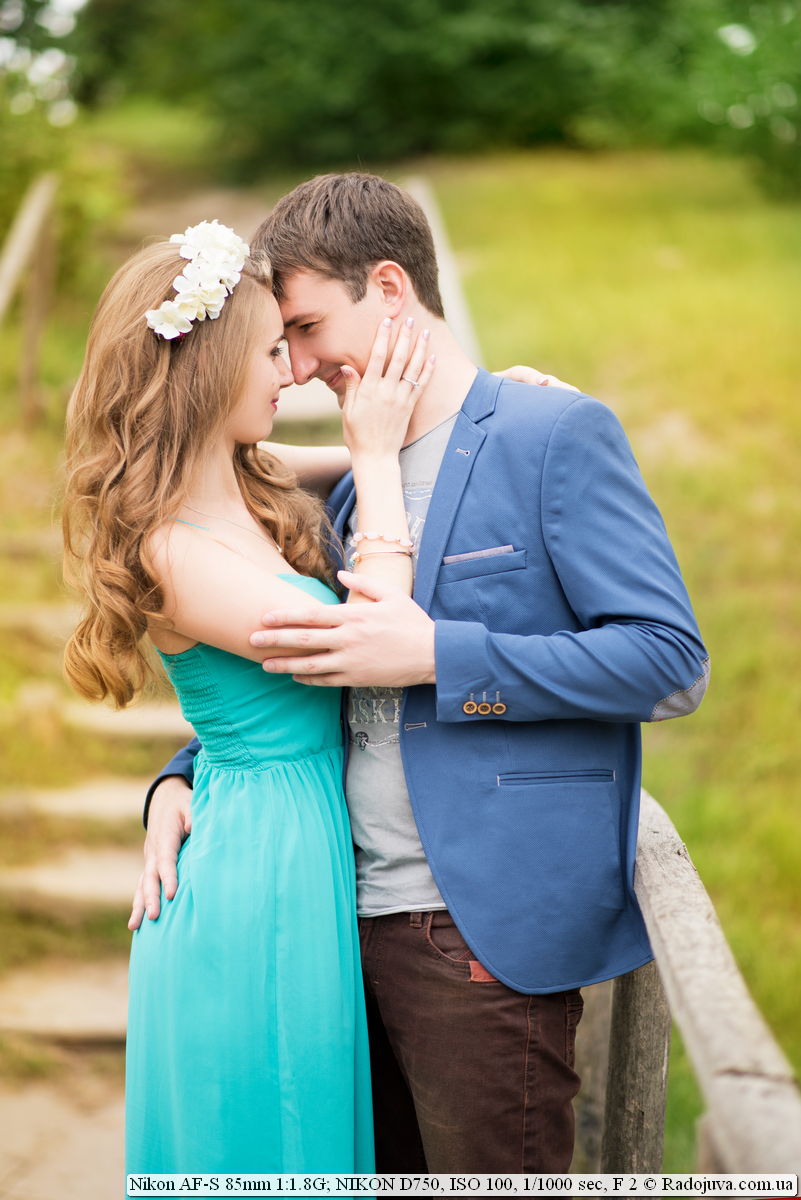




























































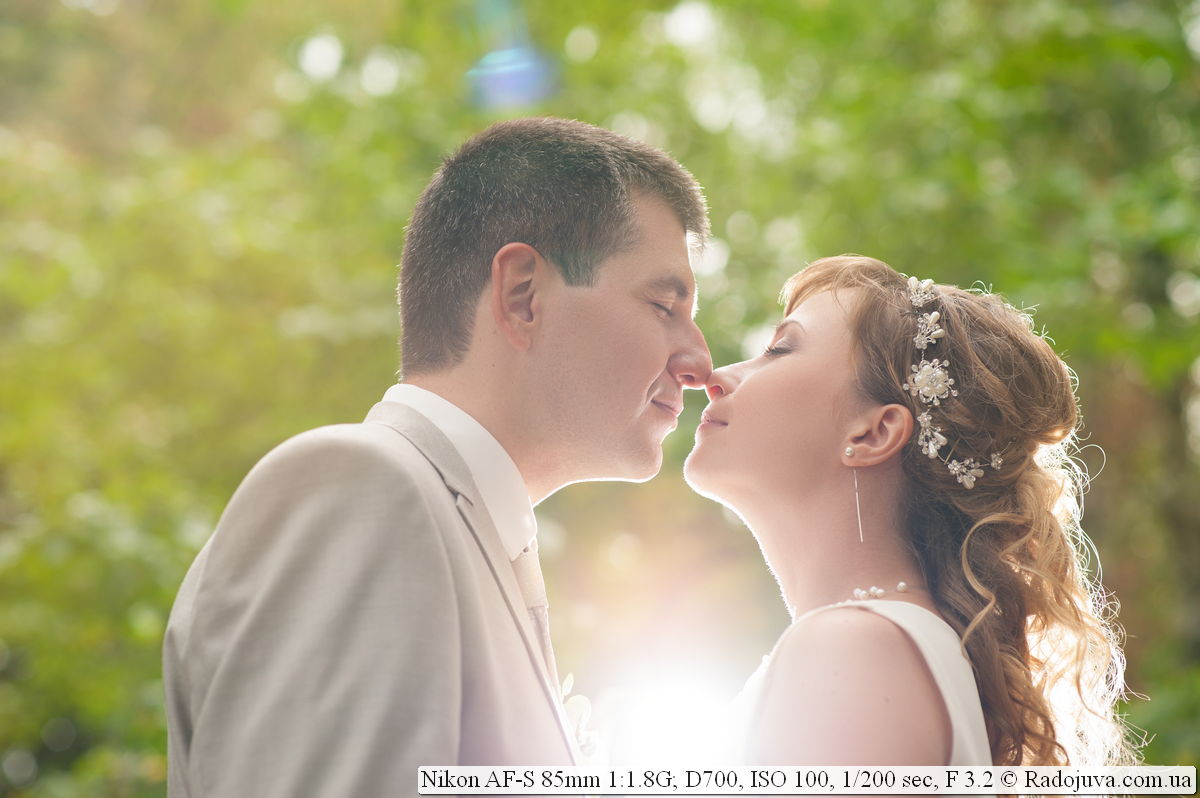
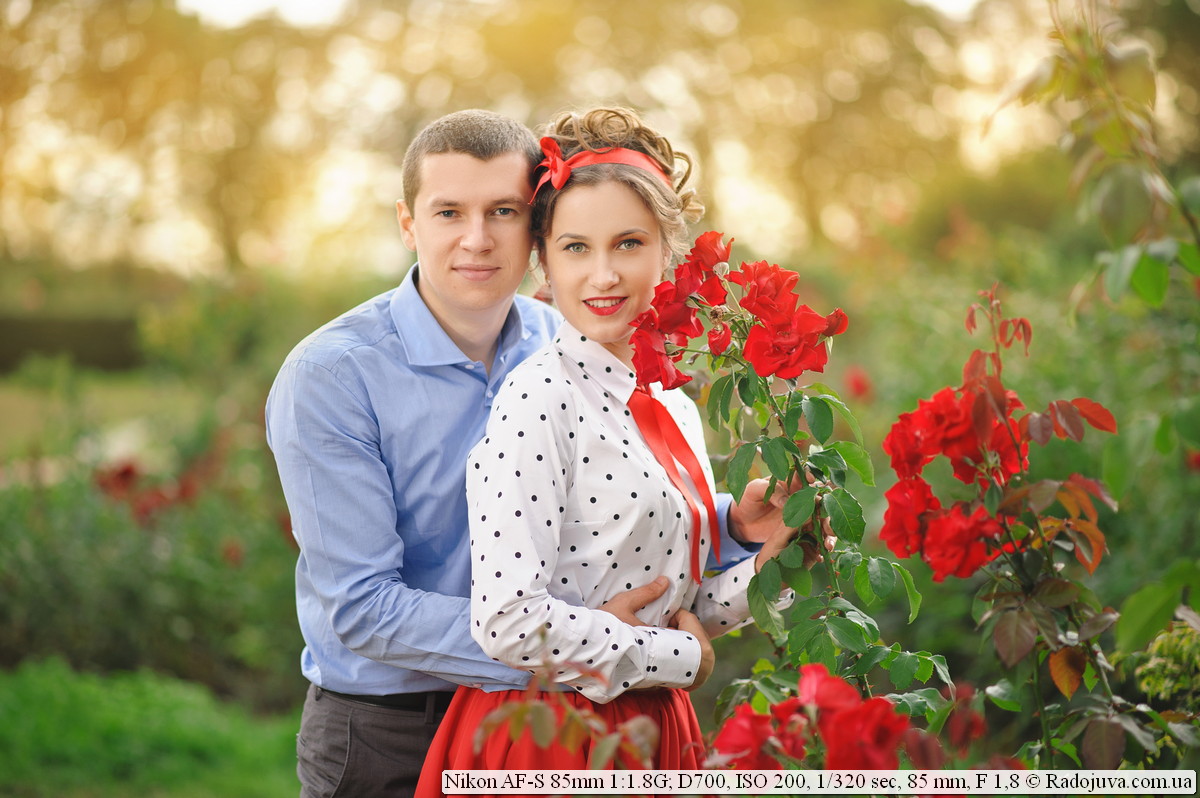

50 / 1,8D, like 50 / 1,4D, are low-contrast and have low resolution at an open aperture, so 50 / 1,4G is best suited for tall portraits - the only drawback of which is a lower focusing speed than 50 / 1,4D , but it is more accurate in getting into focus, which is important on an open aperture, where the grip is already quite small ...
- but there are pluses and 85-ki 1,8G when shooting tall ones - although you have to run far from models with such a focal length when shooting tall ones, but this lens is very sharp and quite contrasting already at 1,8, which allows you to shoot models in a fairly narrow grip with interesting blur background.
But personally, I still prefer to use lenses for those scenes for which they were specifically designed - 85 / 1,8W for face and waist portraits with low grip, gorgeous bokeh and color, and perhaps the best possibility of drawing cilia for a model ...
I also have 80-200 / 2,8D in my arsenal for working at weddings and in kindergartens, but he paints in a completely different way and is not able to replace the originality of the cheaper 85 / 1,8Z in the picture.
I think that having a Tamron 28-75, you can safely replace 50 / 1,8D with this ZUM, although with some restrictions, but 85 / 1,8W cannot be replaced with anything for a beautiful wedding photography - I recommend 85 / 1,8Zh to your tamron, and not a more luminous fifty-kopeck piece.
I do not like to argue about any contrasts, but. I spent it all evening, comparing 50mm f / 1.8D, f / 1.4D and f / 1.4G. I almost broke my eyes. I did not see the difference between f / 1.4D and f / 1.4G, which justifies replacing D with G. Somewhere, somehow, quite a bit, it may be better, but on the press it is never even noticeable unless you print posters a meter and a half, and then look at them point-blank with a magnifying glass. By the way, the resolution is the same for both, regardless of the aperture.
Interestingly, DRL tests confirm your words. Moreover, the 50 1.4 version of r is less sharp than the q version. 50 1.8d is the least sharp of the four modern fifty dollars. But 50 1.8g is just a lot more difficult than the brothers, judging by the tests. True, my personal impressions are somewhat different. I saw a noticeable difference between the 1.4 d and d versions. By 1.4, the qA version is higher, the edges are soapier and the overall contrast of the picture is reduced. 1.4 g does a better job of this. Only by closing both windows to 2.8 did I see the same sharpness, before that 1.4d lagged behind 1.4g. And yet I was forced to abandon 1.4g due to its slowness. Slowness can be forgiven for portraiture or super-aperture glass (1.2), but staffing with 1.4 is not possible. Even the Canon 50 1.4 was faster. And in my opinion, an excellent glass, if you need 1.4 in principle, is sigma.
But still, I rarely use even 50 1.4d (only if 1.4 is fundamentally needed). In all other cases - 50 1.8g. In my opinion, this is the best fifty dollars in both nikon / canon systems. Sharp, fast, moderately protected, small, without huge HA and with a pleasant boke (not like the canon 50 1.8 on covered). So in my opinion, if you need fifty dollars, then you need to take 50 1.8g. Ideally, with a silver ring that went as a whale to nikon df, which gives +100 to coolness :).
I also compared 1,4G and 1,4D - in my opinion, at apertures of 2,8-4 they go almost head to head in sharpness and detail, at f / 2.0 the D-version is a little sharper.
The only significant difference in the picture is boke: the G-version gives almost perfect circles, while the D-version gives nuts, and even saws at some F values.
G and D versions of fifty kopecks, IMHO, differ more often in pattern and bokeh than in velmi difference in sharpness.
“But personally, I still prefer to use lenses for those scenes for which they were specifically designed - 85 / 1,8W for face and half-length portraits with a small grip” ... You're wrong. The lens was designed for full frame, so with 80cm MDF it is difficult to shoot a face portrait if the face is human and not bearish. I don’t presume to argue so categorically what the lens was designed for, but waist, full-length and pair portraits are exactly that. For the face, after all, 105-135-180 (FF)
Of course you're right…. “That's why it is difficult to shoot a face portrait with 80cm MDF”…. Why shoot portraits at minimum focusing distance (MDF) ??? And what, with focal lengths of 105-180 at the minimum distance, facial portraits are better? I didn’t know ... In principle, you can of course take a panoramic view of 16 shots that way and stitch them in Photoshop .... but this is already confusing. For me personally, on a full frame for facial portraits, the most “tasty” ones are 85-135. In this case, the distance must be observed. On the subject of Nikon's 85s, I can add; - 1.4G and 1.8G are out of competition in terms of picture quality and focusing accuracy (on good carcasses of course such as D7100, D7200, D610, D750, D810). On ancient entry-level carcasses with whale 18-55, you will not notice the difference, do not bother yourself in vain.
Nikon AF-S 85mm 1.8G vs Sigma 50mm 1.4 DG HSM EX. Maybe someone will be interested. I understand that these are two completely different lenses and for different tasks. Photos without processing! A doll from a tripod, an apple from a hand.
Thanks for the photo. Long chose between Nikkor 85 1.8g and Sigma 50 1.4 EX.
Task - half-length portraits, DX camera.
85 is sharp and good, but on DX you have to run or change lenses if you want to “fit the whole model” into the frame. The result is the purchase of Sigma.
I regret the choice only when I read the reviews of "85".
In fact, Sigma is 100% satisfied
Apple
Yes, it’s a pear!
Those. it turns out the same thing. At 85, the sharpness is slightly better due to the lower level of aberrations, this is understandable.
Good evening everyone. Tell me, please, which lens hood can be matched to the observed lens. I did not find the original HB-62 on sale. Maybe suitable from other models? Thank you in advance for your help.
Partially answer to myself: the hood from 18-105 has become like a native. But the focal length is not quite suitable, because the lens hoods for zoom lenses, as you know, are calculated for the smallest focal length. So still asking for help.
then look for 70-300Vr (HB-36) - they have the same landing position with 18-105, and the focal point is close to yours.
In general, I saw on aukro Chinese analogues of popular blends.
hammer in. this eighty-five hood practically does not need a hood (and it has a large and uncomfortable hood. By the way, you can buy it on ebay), and in rare cases you can cover it with your hand.
subjectively according to your photos it seemed that the picture and bokeh were 85 better than 50. I think all the same to dwell on it. I consider it as a front portrait for a crop, because I already have 35 and I think that 85 will be more practical than 50 for this purpose. what is your opinion?
85 will be better. A fifty-kopeck piece on a crop is a half-length portrait, but not a front one (there will be strong distortions).
85ka is more interesting than fifty dollars, bokeh is nicer, perspective is different. but stronger chromatite. by geometric distortions - if they distort, then imperceptibly.
Take the 85th boldly. Do not lose. Great glass.
If you have 35tki fifty dollars is about nothing. Take 85mm and you will be happy.
thank you for your responses. I will stop at 85, now it only remains to mature for a price tag three times more expensive than the 50th! )….
A little dementia and courage. About a year has passed, the lens is in perfect order. Speaking of moisture protection.
Question to the experts. I photograph football (children) d5200 + 55-200 dx. It is enough for the street, but the hall or the arena does not take out, it's dark. There are 50 1,8g with it a little better on the premises but not enough focal length (70-80mm usually when using the zoom). Is it possible to take 1,8g for these purposes, the focus speed about which Arkady writes here is confusing. It is clear that it would be better if the zoom is aperture for these purposes, but I can’t handle the budget of 28-70 2,8.
You will not keep up with nichrome - the speed for sports is insufficient. Only staging. In general, indoor sports are a challenge for missile defense technology. I shoot dances with FF and 70-300 - I suffer from noise even on FF. 85 ka is very slow. Better noisy than out of focus
The author of the review says that the lens copes well with side and backlighting, however, many other different reviews and reviews write that it copes extremely poorly with these “phenomena”. As a result, now I don't even know ... - to take it or not, because I like to shoot back with reflectors.
Here I have a picture https://radojuva.com.ua/wp-content/uploads/2013/09/nikon-85-18g.jpg with a flash in the back, glare is present, but overall the contrast is kept. The first photo is also backlit / side-lit with flash, all buzzing. Anyway, in the back it works well. It's just that artifacts appear in the backlight, albeit small. Each individual user estimates their intensity differently. For some it is bad, for others it is good.
Good afternoon, I recently changed the camera to full frame, took 750 Nikon, now I choose a glass for it, there’s a fifty dollars, but I want to take something more interesting, I choose between Nikon 85mm F / 1.8G (used) and Tokinovsky weaving (if take, then new), which is better to take?
What did you choose as a result? I am in the same situation. Enough 85 for 750 or not?
Nikon 85 / 1.8g is a great lens. Super sharpness, bokeh, color, weight, price.
I didn’t have 1.8d, but compared to the Nikon 50 \ 1.8g it is much sharper.
The only small minus_ in insufficient light in a room where the Nikon 50 \ 1.8g focuses quickly, 85 cannot constantly catch. I have to focus manually. I wonder how it is in comparison with the new tamron 85 \ 1.8.
-----------
http://www.kolosphotography.com/
Greetings!
I want to buy an 85mm lens for my D610. It is now possible to buy a new 85mm 1.8g or a used 1.4d for about the same price. The construct is not particularly important to me, the main thing is the quality of the picture. What would you advise to choose?
Dmitry, did you look at examples from both lenses? Do you feel the difference?
In this review, the pictures are more colorful and I like more than in the review from 1.4d, but this is not an indicator. I would like to test both, but 1.8g is currently not on sale in my city. 1.4d at the moment I took to use a friend. It seems not bad, but everything is relative, and I can’t compare it live, so I decided to ask for advice here.
On the technical side, 85mm f / 1.8G is preferable - it tolerates side and back light better and focuses, less chromatite, sharper on the open, etc. Compatible with all cameras, including screwless ones, which is also important - you never know - not want to carry extra weights and grab a D3300 + lens.
At the same time, some photographers consider the 85mm f / 1.4d drawing much more interesting for artistic photography and put up with its shortcomings in comparison with newer solutions.
I would have decided on yours what the lens is for (weddings to shoot or all kinds of art), how critical the flaws of 85mm f / 1.4D are, and I would try to find the difference in the picture by looking at hundreds of shots from both lenses (not only from this site).
Thank you, Yuri!
The “screwdriver” doesn't bother me much. Judging by the pictures that I managed to take at 1.4, the bokeh is softer (softer chtoli) than the pictures at 1.8g from the Internet, but again, this needs to be compared forehead to forehead, but I don't have that opportunity. Perhaps someone had both models, but chose one. I would like to know what was the decisive factor.
It has been said repeatedly, a beautiful drawing, there is a marriage of optics)
The lens is a bomb. Whenever possible, I shoot only for them (on street photosets). Focus is better than 50 1.4 in. But HA just kill. Purple border in almost all photos. Already tired of cleaning. At first I thought it was just a crop or crooked hands. But a year has passed, I changed my technique, tried several other lenses. It turned out - 85, she is
and at the sight of a purple border I am already jarring ...
Yes, everything looks similar on my 85 1.8G .. During the shooting, you should always remember these HAs, for example, to avoid branches against the sky, even the clothes of models with white details will be painted with purple and green borders! Capture NX-D program removes such XA only in the zone of sharpness, but they remain in the background. Interestingly, 85 1.8D less chromaticity? On the 1.8G model, the problem disappears only from aperture 8 or when to shoot at B / W :) But then the sharpness is brutal! (camera d7100)
Which is better to take for a portrait. Wedding, walks, love stories .. Nikon AF-S Nikkor 85mm f / 1.8G or Tokina AF 100mm f / 2.8?
Nikon AF-S Nikkor 85mm f / 1.8G - portrait lens
Tokina AF 100mm f / 2.8? - a macro lens with all the consequences
Well, the quality is different ...
I met somewhere in the comments that the price for it is $ 450 ... We have it for almost 600 ... The day after tomorrow, I will probably go to get a loan ...)))
What for? Better buy tickets to Poland and back. Even in this case it will be interesting. And if you buy 2 lenses, then profit. )) I basically do not buy officially delivered optics (new) And not only optics. Either abroad or smuggling. Well, or boo at a normal price. Prices for a new one sometimes differ by half. It's about Ukraine, a country of not frightened billionaires. For example, I bought 1.8g for 185g, and here it costs from 270 to 380. You have to be an idiot to buy at that price. Moreover, visa-free travel
Sorry, as they say, I’ll put in my five cents. I went to Poland for the first time to work, I liked everything, got used to it and wanted to find out the prices for photographic equipment on the Polish website. To put it mildly, there was a dead-Nikon D3200 up to 2000 zlotys second hand, also with Nikon lenses 18-105mm-about 1000 zlotys, and I expected in a developing and growing country to buy cheaper than ours, in Ukraine.
some nonsense. this is the cost of a new camera :)
Nobody has come across this "miracle"?
It seemed to me or so it is. This lens gives a flat picture not at all three-dimensional ...
Which is preferable for multi-pixel matrices - 85 \ 1,8G or 85 \ 1,4D
1,8G is sharper. It allows the d800e matrix at 1.8, I write based on personal experience, the main thing is to avoid blur and not miss focusing.
Arkady, and which of the 85 Nikkorov twists the background (bokeh) like the 44th Helios?
I recently saw pictures on Flickr with d800 and 85 / 1.8 (the author did not indicate the version) and there the girl had a characteristic twisted bokeh. I want the same ...
Spins no, Nikkory make lemon in the bokeh.
Yes, the lemons are in bokeh and the background is still twisted ...
It looks like a picture of 85 / 1.8G.
Compared with your photos.
You, Arkady, have better processing and pictures than that of a Chinese from flickr :)
I bought 85mm 1,8g, compared it on d600 and d3200 - what for soap on ff and a razor on a crop with 100% increase? not such a transition to ff I expected (
https://i100.fastpic.ru/big/2018/0819/61/_6fe266142e3f1e034a471a54a72d0061.jpg
https://i101.fastpic.ru/big/2018/0819/64/_59f01b28cbacc51fa5fa2ae41d395b64.jpg
It is solved by fine tuning the AF on the d600 on the target for a specific lens.
The same lens can focus differently on different carcasses. For example, I somehow put 35mm 1.8g on d300s, so there I had to enter a correction as much as -8, in my opinion - but on d5100 the same lens hit right on target.
In general, on native crop, native Nikon lenses, as a rule, focus very accurately, but on advanced cameras and FF there can be a back / front that can easily be adjusted by tuning.
Arkady, and how on hole 1,8, when shooting a half-length portrait with 2 people, both heads that are not on the same line remain sharp? according to the depth of field calculator, the sharpness zone is about 4 cm ...
and my aunt with her hands in front of her on a branch - are her hands sharp too ?!
Hands are no longer sharp, if you are talking about the last photo in the examples. It can be compared to the uncle's right hand. It's just that the FF transition from “sharpness to blur” is larger and “smoother” than that of the crop, so the impression is that it seems to be sharp.
Hit one plane, sharpness plane
Good afternoon.
When closing the aperture on this lens while releasing the shutter, the aperture opening resembles an irregular polygon. Each time a different shape.
At 50 1.8g there is no such situation.
How scary is it for the picture ??
If the exposure on frames taken in a row does not spontaneously “walk”, then everything is in order.
Arkady good afternoon, I can’t understand anything that with my lens help advice.
At 1,8, there is no sharpness at all (full-length portrait) - soap, regardless of the exposure, even at 500 or more does not matter. 2,5 - sharpness appears, but at shutter speeds of 160 and shorter micro-smears appear. Is this a bad lens, or do you need alignment?
Yes, I forgot to write, at 7100 and at 610 and 750, the picture is similar, 1,8 is not working on different carcasses.
https://i106.fastpic.ru/big/2018/1206/b7/_1b945887eeff4da6bc476922c86b9cb7.jpg
https://i106.fastpic.ru/big/2018/1206/b8/_9af1c27a08a3ccf5a82b5674466b53b8.jpg
Here are examples of D750 1,8 1/160
but the nose is in focus….
need normal lighting and it will be better IMHO
I’ll write what I see: camera vibration, micro lubrication. IMHO, the second photo is especially noticeable if you increase the portrait in the ear area. You can check again in clear weather at shutter speeds from 1000 to 4000, or with a flash. If there will be soap further, then probably the skew or misalignment of the lenses.
Micro lubricants. In such cases, it is better to remove the tripod with a delayed shutter release to prevent vibration from the mirror. In the event of such situations, I recommend using the Luminar program, in it you can very well adjust the sharpness, strengthen the details and microstructure
Help me choose between 85 1.8j and 85 1.4d. Already a headache. Interested in quality on crop. I just realized that they have different bokeh.
Quality is a loose concept. Sharpness, absence of aberrations - better J. Boke, drawing, spherical ponies in vacuum - better D (as they say)
J is better. But on the crop, most of the bokekha and beauties will still be cut off.
Surprised by the sharpness with an open razor (D700 carcass). Much sharper than the 50mm 1.8G. The only negative is that chromatite is stronger in comparison with fifty dollars. For those who doubt whether it is worth buying 85 mm already having 50 mm, I say with confidence - it is definitely worth it